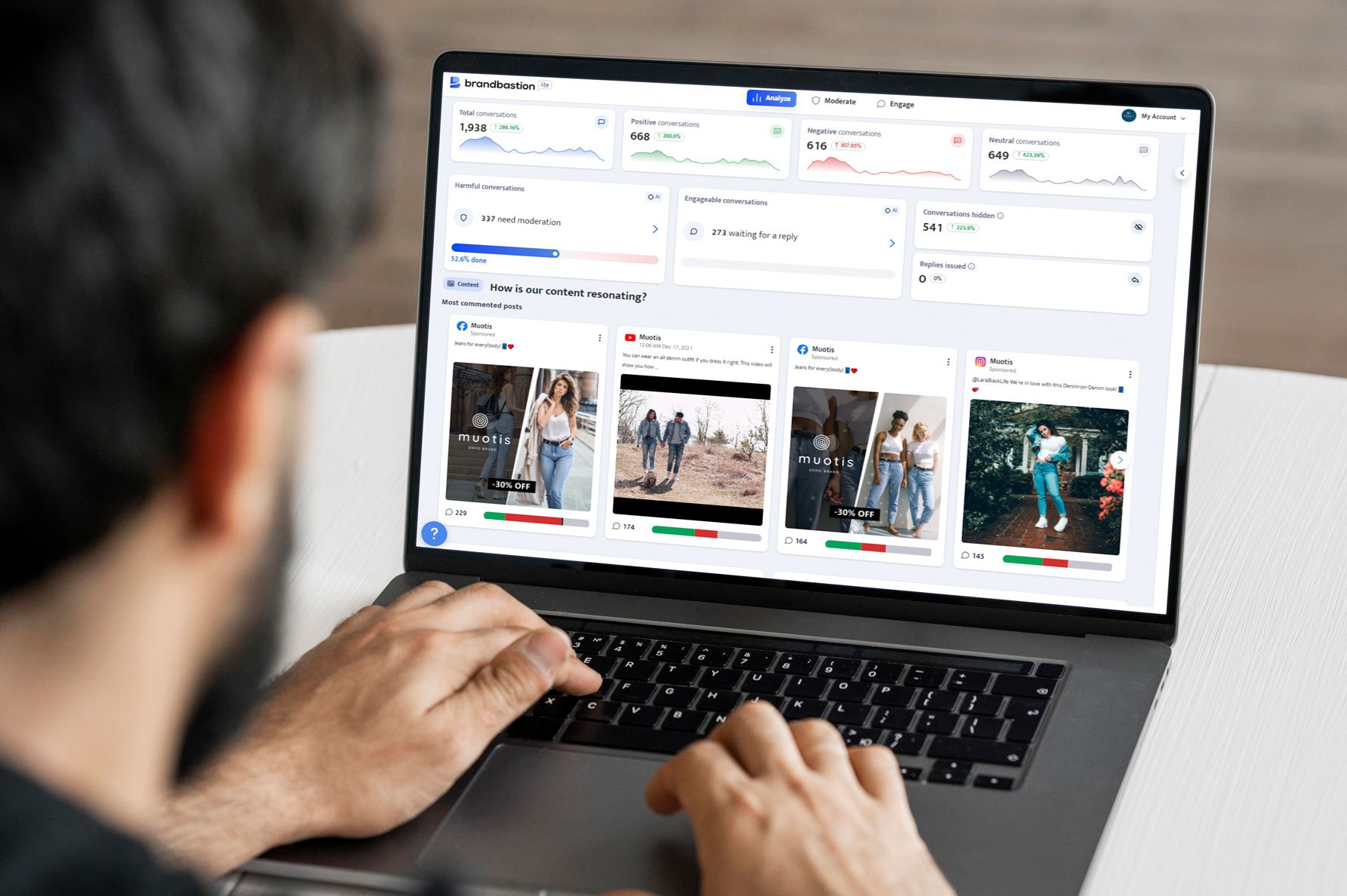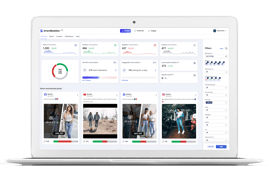
A New Way to Measure Brand Favorability in Real-Time
Accurately measuring brand favorability in real-time has long been a challenge for marketers. This metric is susceptible to various influences, both within and beyond our direct control, and its volatility can be staggering. However, there are effective methods to efficiently gauge brand favorability. The benefits of doing so are substantial, including the potential for increased market share, enhanced customer loyalty, and improved profitability. In this blog post, we will delve into the concept of brand favorability and explore innovative approaches to measuring it in real time.
What is brand favorability, and what does it measure?
Brand favorability is a metric that measures how positively consumers and customers feel toward a brand. It's an important indicator that many marketers rely on when making strategic decisions, as these metrics have been proven to correlate with in-market success.
Generally speaking, the higher a brand's favorability rating, the more likely consumers are to purchase from that brand. Consequently, if a brand has a low favorability rating, it's an indicator that there is room for improvement.
Brand favorability can change over time depending on various factors. For example, your content and campaign strategy, how your audience perceives it, and the overall customer experience. The metrics can also vary depending on the industry, market segment, and the competitive landscape.
How to measure brand favorability
There are several ways to measure brand favorability. One could, for instance, use traditional methods, like market research surveys and feedback forms. These methods can still provide valuable insights, but usually lack the immediacy and dynamic nature when you want to measure brand favorability across the digital platforms of today.
Therefore, not only how you measure brand favorability but also where you measure it plays a crucial role. Because as you know, social media has become increasingly popular, enabling consumers to share their opinions instantly. So, let us look a little deeper into how you can measure brand favorability in a new and more dynamic way.
How to measure brand favorability with the power of sentiment analysis
Social media sentiment analysis is a powerful tool that allows businesses to gauge the overall sentiment toward their brand. It’s a process that helps you analyze people's feelings and attitudes and determine if they are positive, negative, or neutral toward your brand, product, or services. This can help you understand your audience's perception and what affects it.
A way to measure brand favorability with a holistic view
One of the key advantages of social media sentiment analysis is its ability to provide a holistic view of brand favorability. Instead of relying on a limited sample size like traditional methods, sentiment analysis can aggregate opinions across social media platforms. This gives businesses a comprehensive understanding of how their brand is perceived.

BrandBastion Lite aggregates all your sentiment metrics in one place
Understand your brand favorability on a detailed level
Sentiment analysis allows businesses to analyze sentiment at various levels of granularity. This means that brands can delve deeper into understanding the sentiment behind individual posts, marketing campaigns, or specific ads. By identifying specific content that resonates positively or negatively with their audience, companies can make informed decisions to improve favorability.
Sentiment analysis provides brands with the tools to gain an understanding of how their marketing strategy affects favorability. It can be used to analyze sentiment on a post level, across different platforms, and much more.
How to measure brand favorability with social media metrics
While sentiment analysis is a powerful way to measure brand favorability, you can also add other metrics to your analysis.: Engagement metrics such as comments, likes, and shares can also provide insights into brand favorability. If you're already measuring brand awareness KPIs, you can easily repurpose the effort to evaluate brand favorability.
Social media metrics and engagement numbers to look into:
- Volume of comments with Customer Complaints: By tracking the number of complaints received across social media platforms, businesses can identify areas that need improvement. The number of people who are complaining publicly about your brand can show how brand favorability is evolving over time.
- Volume of comments with purchase intent: Higher purchase intent comments generally indicate a positive perception of the brand. This means a greater likelihood of sales, contributing to favorable brand perception.
- Volume of Fan Community comments: These comments often reflect the enthusiasm and loyalty of a brand's dedicated fan base. By tracking and engaging with fan community comments, businesses can foster brand advocacy and build brand awareness. Strong fan community engagement contributes to a favorable perception of the brand among existing and potential customers.
- Share of voice: By analyzing the mentions of your brand in relation to your competitors, you can determine the proportion your brand occupies. A higher share of voice indicates a stronger presence and suggests a positive perception of your brand among consumers.
- Likes, loves, and positive reactions: Likes indicate positive engagement and signify that your audience finds value in your content. Higher like counts suggest a positive perception of the brand and can contribute to increased visibility and reach.
- Shares: Shares indicate that your audience finds your content compelling enough to share with their own networks. Increased shares not only amplify brand reach but also contribute to a positive perception of the brand among a wider audience.
Did you know... When you sign up for our Fully Managed BrandBastion Care services, we'll tag comments so you can get better insights. We tag FAQs, Customer Complaints, Purchase Intent, Fan Community, Constructive Feedback, and much more.
Find a consistent and efficient way to measure brand favorability over time
A challenge when measuring brand favorability is how to do it regularly, consistently, efficiently, and accurately. First of all, you need to be able to handle large volumes of data and conversations across multiple platforms and channels. Moreover, you must ensure the quality of the data and insights, as well as avoid inconsistencies and biases.
Therefore, one of the best ways to measure several metrics connected to your brand favorability is by using social listening tools. In short, it's a true time and resource saver for any marketer.
For example, a tool can quickly automate collecting and analyzing data and provide actionable insights and reports. It also helps you reduce the risk of human errors, biases, and inconsistencies that may affect the results of your measurements. You can also customize your solutions according to your preferences and parameters.
BrandBastion offers a solution that facilitates the measurement of brand favorability. With our powerful AI-driven tool, you’ll get in-depth insights into what your target audience feels about your brand. Try our Lite Platform for free here!
This is why you should measure brand favorability in real-time
When you understand how your target audience feels about your brand, campaigns, and ads, you'll gain a lot of valuable insights. However, there’s more to it. Traditionally, many companies wait until after a campaign has finished its run before measuring data on its performance. With this approach, there's a risk you'll miss out on both opportunities and critical situations.
Let us look at an example:
Imagine you're rolling out a new campaign across several social media platforms. Naturally, you want to know how well the campaign performs, often before the end of its running period.
So, you check the metrics for reach and engagement, which is high. Great, that's exactly what you hoped for!
However, before you evaluate the campaign as a success, consider looking at the nature of that reach and engagement. Is it an effect of a positive or negative perception? To be sure it's because of the right reasons, you can dig into favorability metrics.
Ideally, it's a great campaign based on a deep understanding of your target audience and their needs. If this is the case, you'll gain high reach and engagement because the campaign resonates well with your audience.
However, the high reach and engagement could also be an effect of a negative backlash due to poor content resonance. Such a campaign is not considered a success despite its huge reach.
A campaign like this can not only waste time and money but also have long-term negative effects on your brand. Or, in the worst-case scenario, lay the foundation for a dangerous PR crisis.
Conclusion
In summary, brand favorability is a crucial metric for marketers seeking insights into audience perception and purchase motivations. By measuring brand favorability in real time, you can identify opportunities and challenges and adjust your strategy accordingly.
It’s also essential to measure brand favorability effectively, consistently, and accurately. You need to consider several metrics and areas that reflect your brand’s image and reputation.
You can simplify the process by utilizing a tool that collects and analyzes sentiment data from various channels.
